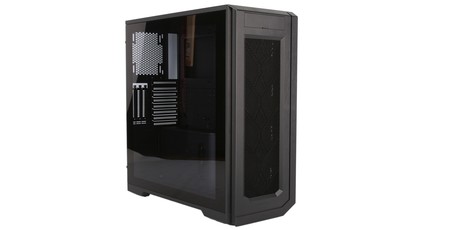
Manufacturer: Phanteks
UK price (as reviewed): £124.99 (inc. VAT)
US price (as reviewed): $139.99 (exc. tax)
While the design of the original Enthoo Pro was good enough to snag our top award at the time, it emerged over six years ago, and case design has advanced since then. The Enthoo Pro 2 is Phanteks’ recognition of this, but the older chassis will continue to be produced and sold in the hope of attracting customers interested in the numerous 5.25” bays. As for the new arrival, it comes in two flavours: a £116 model with a closed steel side panel and the £125 one being reviewed today, which has a tempered glass side panel and integrated addressable RGB lighting.
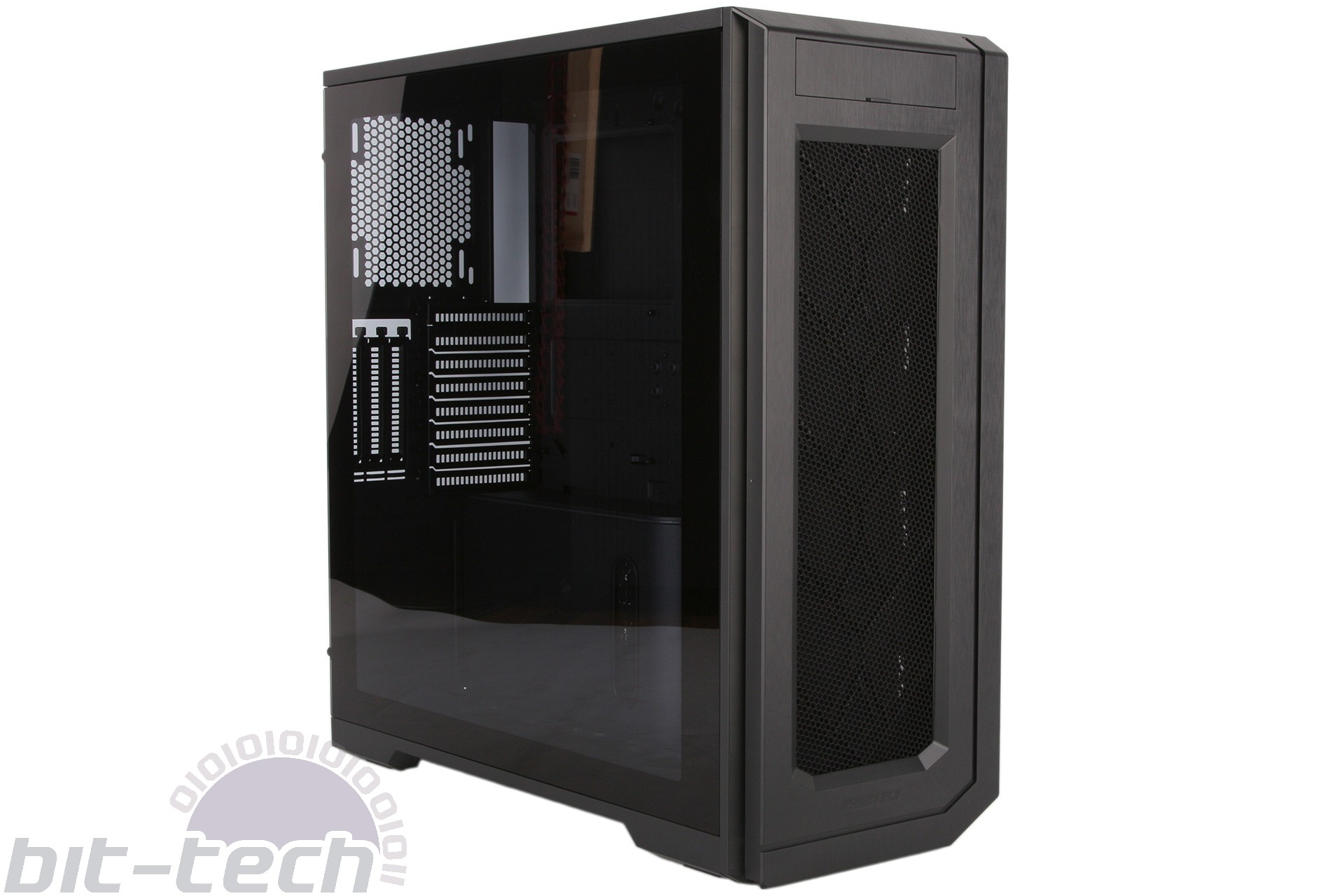
With no optical drives, Phanteks has focussed on making the Enthoo Pro 2’s interior friendly to a wide range of high-end builds. As with most full towers, users can choose to focus on airflow, water-cooling, or storage, but the Enthoo Pro 2 can also be used for dual-system or dual-PSU builds. Some choices will require upgrades (which Phanteks is happy to accommodate, naturally), but as you’ll see there’s plenty you can do from the outset.
Removed from its packaging, the Enthoo Pro 2 impresses with robust build quality. It’s a shame not to see real brushed aluminium on the front fascia, but the brushed effect applied to the solid plastic is visually pleasing. In its assembled state, the chassis has a sturdy construction that’s matched by four rubber pads on the feet to provide grip.
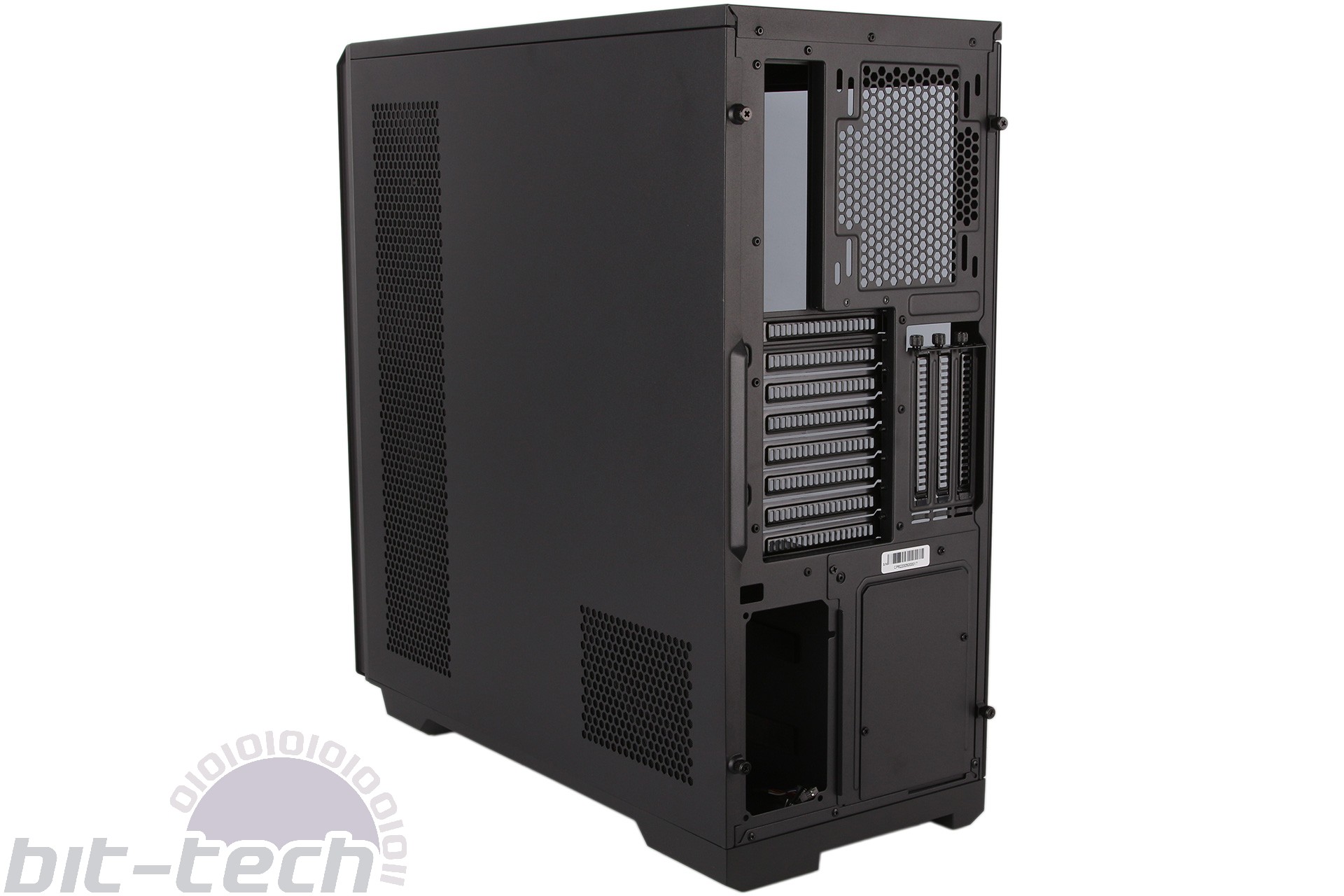
A view from the rear gives away the non-traditional layout, and the vertical PSU is key to enabling dual-system and dual-PSU support. The high-end aspirations are reaffirmed by the eight PCIe slots and the three neighbouring vertical ones. At 240mm across, the Enthoo Pro 2 is wider than most but not bloated, and keeping both height and depth comfortably below 600mm is impressive given what can be housed inside, though it’s by no means small.
It's worth noting the Enthoo Pro 2 comes with no fans of its own. This is a reasonable choice given that the case’s size and price make it suited to those who enjoy meticulously planning their build; just be sure to factor this into your budgeting.
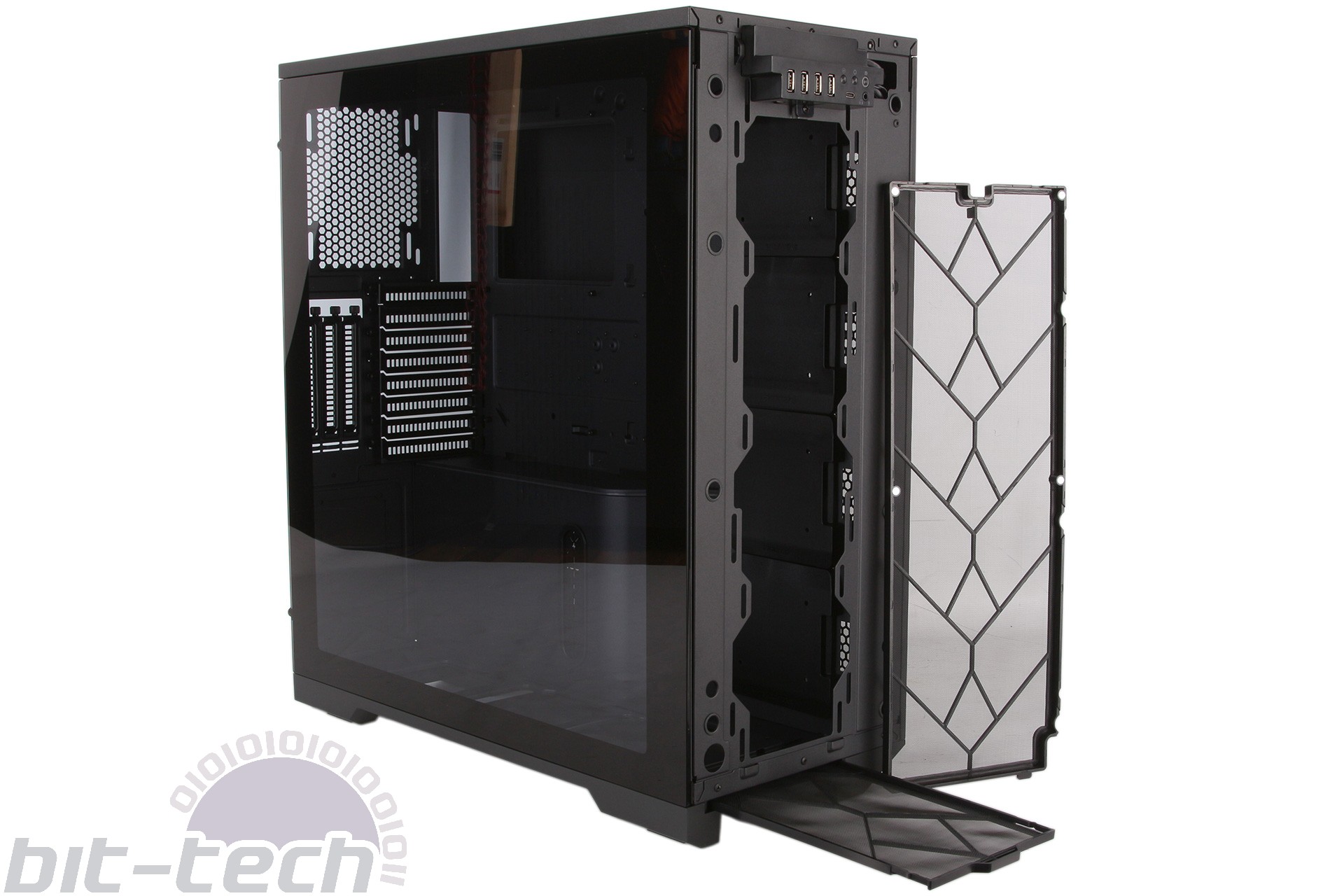
With fan mounts in the front, rear, bottom, roof, and side, users can install up to 15 fans (or up to 14 if you prioritise 140mm). The massive cutout in the front panel gives ample space for air to enter, and it’s covered by Phanteks’ High-Performance Fabric mesh, said to offer superior airflow compared to typical metal mesh designs.
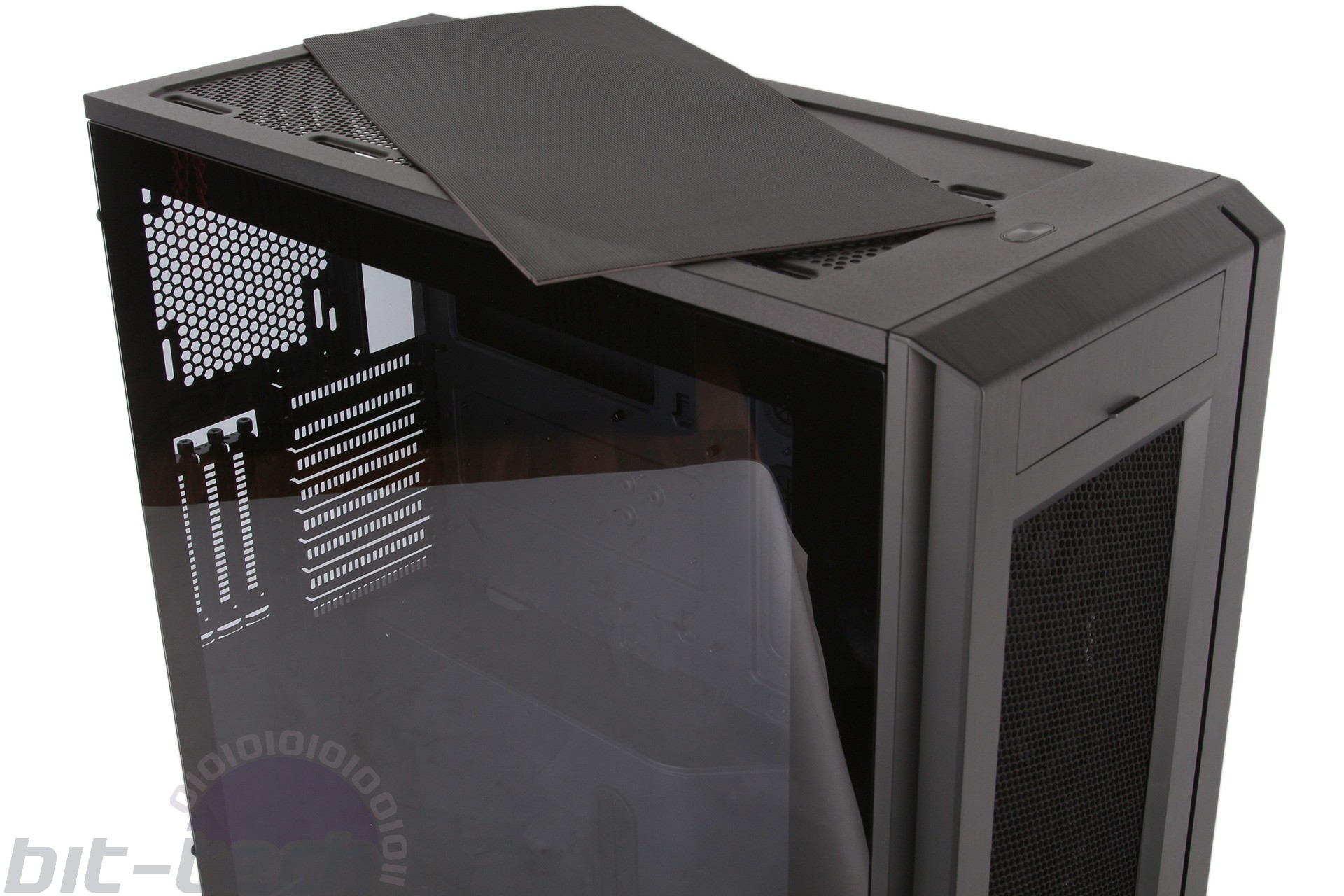
You can get enough grip on the front panel to pull it off without having to lift the case, and this grants access to the magnetic front dust filter as well as the full-length bottom one, which slides out to the front and has a slot to make reinsertion as easy as possible. On the inside of the steel side panel, there are also magnetic filters covering the PSU intake area and the optional side fan-mount, and the external magnetic roof filter completes the picture – no area is left unguarded. Phanteks is using what it calls ‘high airflow dust filters’ for all locations except the roof, where a ‘regular’ (denser) filter is used to help combat dust falling in.

Aside from the large, roof-mounted power button (which has a satisfying action), the front I/O ports and buttons are located behind a flip-up cover (nope, it's not an optical drive bay!) Four USB 3.2 Gen 1 (previously USB 3.0) Type-A ports are accompanied by a single USB 3.2 Gen 2 (previously USB 3.1) Type-C connector and a four-pole 3.5mm headset jack. The reset switch is also joined by hardware controls for the RGB lighting, with two buttons for mode and colour. Software control is also available with compatible motherboards via an internal header. These two buttons are not present on the RGB-free Closed edition.
Specifications
- Dimensions (mm) 240 x 560 x 580 (W x D x H)
- Material Steel, plastic, tempered glass
- Available colours Black
- Weight 13kg
- Front panel Power, reset, 1 x USB 3.1 Type-C, 4 x USB 3.0, 1 x headset jack (mic & headphones), 2 x LED control
- Drive bays 4 x 3.5" (up to 12 x 3.5" with additional trays sold separately), 11 x 2.5" (up to 15 x 2.5" with additional trays sold separately)
- Form factor(s) SSI-EEB, E-ATX, ATX, micro-ATX, mini-ITX (dual-system supported)
- Cooling 3 x 140mm or 4 x 120mm front fan mounts, 1 x 140mm/120mm rear fan mount,
3 x 140mm/120mm roof fan mounts, 1 x 140mm or 3 x 120mm bottom fan mounts, 4 x 120mm side fan mounts (fans not included)
- CPU cooler clearance 195mm
- Maximum graphics card length 503mm (345mm with HDD tray installed)
- Extras Removable dust filters, RGB LED controller, dual-system mini-ITX motherboard bracket, anti-sag GPU bracket, 1 x mini-ITX vertical GPU bracket (riser cables sold separately)

MSI MPG Velox 100R Chassis Review
October 14 2021 | 15:04

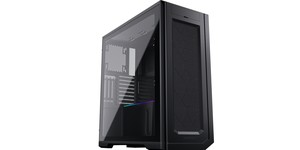
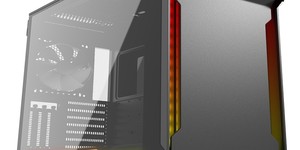





Want to comment? Please log in.